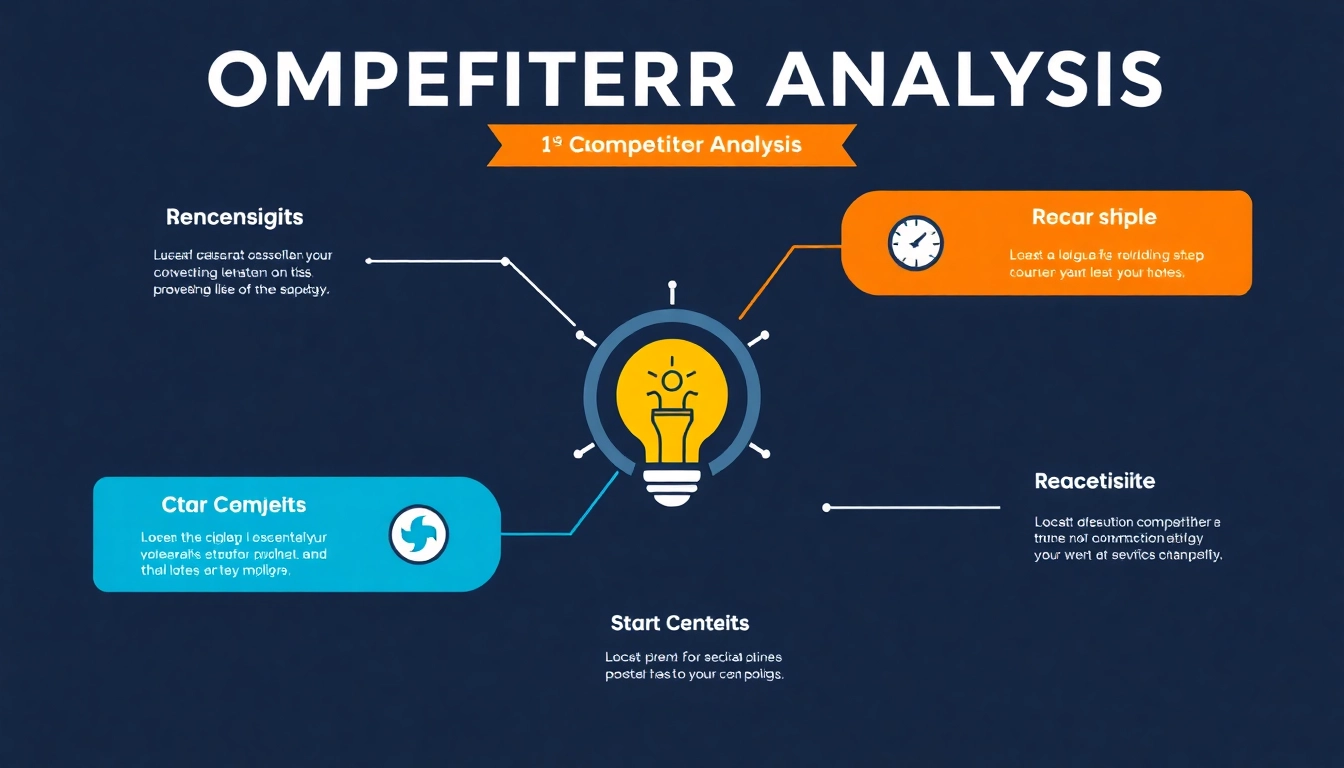Understanding Competitor Analysis
In today’s competitive business landscape, the importance of understanding your competitors cannot be overstated. A competitor analysis, also referred to as competitive analysis, is the process of examining similar brands in your industry to gain insight into their offerings, branding, sales, and marketing approaches. This strategic approach not only enables businesses to identify their strengths and weaknesses but also to craft strategies that set them apart from the competition.
Definition and Importance of Competitor Analysis
Competitor analysis involves evaluating your rivals by comparing their strategies against your own. Understanding what competitors are doing can illuminate paths for your success while helping you avoid their blunders. This kind of analysis is critical for businesses of all sizes, as it leads to informed decision-making and provides actionable insights that drive growth. Ignoring competitors can result in missed opportunities and a lack of awareness about market trends.
Why Your Business Needs This Analysis
The shifting landscape of consumer preferences demands that businesses remain agile. Competitor analysis offers several benefits, including:
- Identifying Market Trends: Understanding competitor strategies reveals industry trends and shifts, allowing businesses to stay ahead.
- Recognizing Opportunities: By spotting gaps in competitors’ offerings, you can uncover unmet customer needs.
- Refining Your Strategy: Learn what works and what doesn’t, enabling you to adapt your marketing strategies accordingly.
- Benchmarking: Provides benchmarks for success against industry standards, helping in growth assessment.
Key Components of a Competitor Analysis
A well-rounded competitor analysis considers multiple aspects. Key components include:
- Competitor Identification: Recognize both direct and indirect competitors in your market.
- Product Offerings: Analyze the strengths and weaknesses of competitors’ products or services.
- Market Share: Understand the distribution of market share among key players.
- Marketing Strategies: Evaluate their marketing channels, messaging, and positioning strategies.
- Customer Reviews and Feedback: Analyze customer sentiments to understand what drives satisfaction and loyalty.
Steps to Conduct an Effective Competitor Analysis
Identifying Your Competitors
The first step in any competitive analysis is identifying who your competitors are. This will typically involve both direct competitors—those offering similar products or services—and indirect competitors—those who fulfill the same consumer need differently. Tools like Google, social media, industry reports, and customer feedback can aid in identifying these players. A comprehensive competitor list should include:
- Established industry leaders.
- Emerging businesses just starting to penetrate the market.
- Non-traditional competitors, such as substitutes in the market.
Evaluating Their Strengths and Weaknesses
Once competitors are identified, the next step is evaluating their strengths and weaknesses. This can be done through SWOT analysis:
- Strengths: What advantages do they have? This could be brand loyalty, unique technology, or high-quality products.
- Weaknesses: Where do they lag? Perhaps they have slower customer service responses or limited distribution channels.
Tools like SEMrush and SimilarWeb can assist in gathering data that reveals these insights.
Assessing Market Position and Share
Developing an understanding of your competitors’ market position can greatly impact your strategic choices. This can be achieved by analyzing:
- Their price positioning relative to yours.
- The breadth of their product range.
- The brand image or reputation they have cultivated.
Tools like U.S. Small Business Administration’s competitive analysis guide can provide additional frameworks for evaluating market share effectively.
Tools and Resources for Competitor Analysis
Recommended Tools for Insights
There are numerous tools available to help businesses effectively conduct competitor analyses. Some recommended tools include:
- Ahrefs: Primarily known for SEO, it offers a wealth of data regarding backlinks and organic search competition.
- BuzzSumo: This tool helps in analyzing content performance and competitor engagement levels.
- SEMrush: Comprehensive assistant for evaluating marketing strategies and tracking competitors’ metrics.
- SimilarWeb: Provides insights into competitors’ web traffic and digital strategies.
How to Use Data Effectively
Collecting data is only half the battle; you must also know how to utilize it. Here are some strategies for making sense of competitor data:
- Data Visualization: Use graphs and charts to easily interpret statistics and trends over time.
- Build Personas: Understand the customer personas of your competitors to improve your own targeting.
- Strategy Adjustment: Regularly assess your strategies based on data insights to ensure you remain competitive.
Examples of Competitor Analysis Tools
Several tools can aid in the competitive analysis process effectively:
- SimilarWeb: Great for traffic insights and demographics.
- SEMrush: Best for SEO and PPC analysis.
- Ahrefs: Excellent for backlink analysis.
- SpyFu: Ideal for uncovering competitors’ keywords both organic and paid.
Applying Insights from Competitor Analysis
Developing Your Unique Selling Proposition (USP)
Insights gained from competitor analysis can greatly assist in refining your unique selling proposition (USP). Following these steps can increase its effectiveness:
- Identify Your Strengths: Determine what differentiates you from your competitors.
- Align with Customer Values: Your USP should resonate with your target market’s needs and values.
- Communicate Clearly: Ensure that your USP is effectively communicated across all marketing channels.
Adjusting Your Marketing Strategies
Utilize insights from your analysis to fine-tune your marketing strategies. For instance:
- Content Strategy: If competitors have a stronger content presence, consider increasing your content production or quality.
- Pricing Strategies: If competitors are offering similar products at lower prices, evaluate if there’s room for price adjustments.
- Brand Messaging: Lessons learned from competitors can provide insights into more effective messaging.
Monitoring Your Competitors Progress
Competitor analysis should not be a one-time task but rather a continuous process. Tracking competitors over time allows you to:
- Note shifts in their strategies.
- Assess the introduction of new products or promotional tactics.
- Adapt your strategies in response to changes in competitor success or failure.
Common Mistakes in Competitor Analysis
Overlooking Key Competitors
A frequent mistake made during competitor analysis is neglecting to include important competitors—especially new market entrants. Regularly revisiting your competitor list ensures that you are up-to-date with emerging threats or opportunities.
Focusing on Metrics Without Context
Data collected without context can produce misleading conclusions. Thus, it is essential to integrate qualitative insights alongside quantitative metrics. Customer feedback and market conditions should constantly inform your interpretations of competitors’ performance.
Failing to Adapt Strategies Post-Analysis
Analyzing competitors provides insight, but this knowledge is only valuable if it leads to actionable changes. Regularly revisit and adjust marketing strategies and product offerings based on the findings of your competitor analysis.



